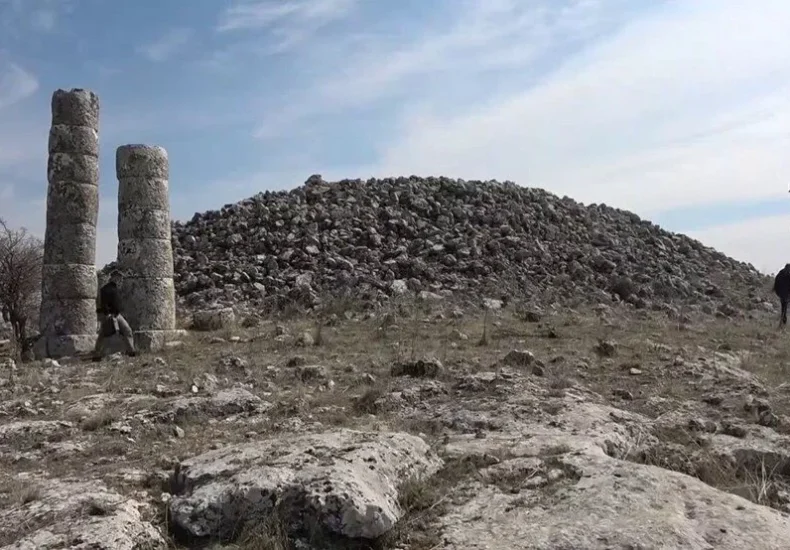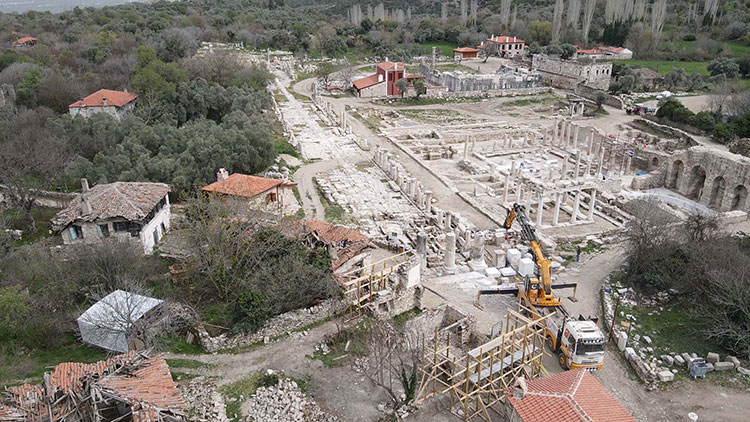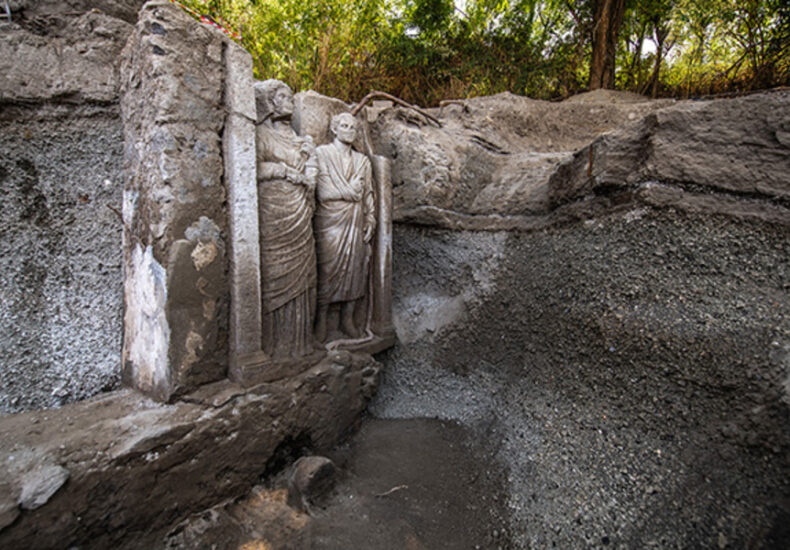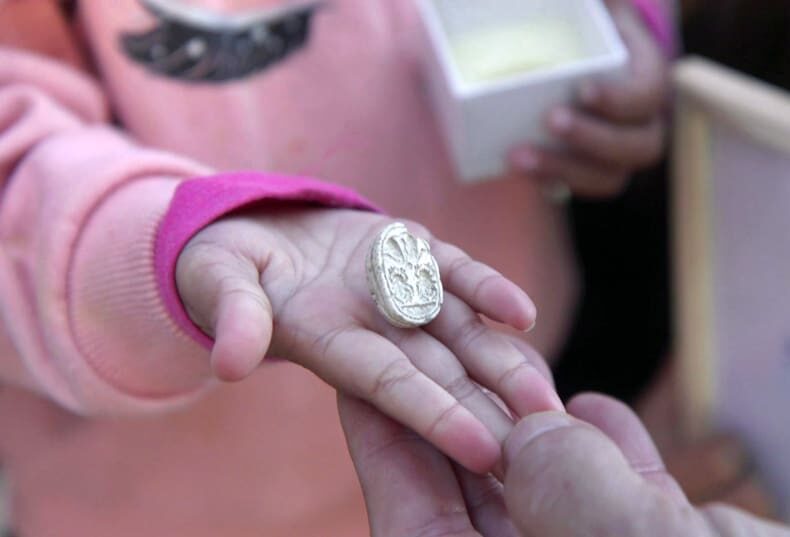
Commagene Kingdom’s Monument Defying Time: Sesönk Tumulus
In the mystical geography of Adıyaman, the Sesönk (Dikilitaş) Tumulus rises like a whisper from beyond time. This ancient structure is the 2060-year-old resting place of II. Mithridatis, son of Commagene King I. Antiochos. Bearing traces of luxury and splendor, this tumulus, with its rock-carved chambers and massive stone mound, holds a captivating mystery. Unlike

The 2200-Year-Old Assembly Building of Stratonikeia, The City of Gladiators, will Return to its Old Days
The 2200-year-old assembly building of the Ancient City of Stratonikeia, known as the “city of gladiators” in the Yatağan district of Muğla and included in the UNESCO World Heritage Tentative List, is being restored to its former glory with meticulous work carried out under the “Legacy for the Future” project. This unique ancient city, bearing

Ancient Tomb Relief Depicting Lifelong Love Found in Porta Sarno Necropolis in Pompeii
A striking discovery illuminating the historical fabric of Pompeii has been made in the Porta Sarno necropolis. The “Investigating the Archaeology of Death in Pompeii” project, a collaboration between the Universitat de València and the Pompeii Archaeological Park, has unearthed an extraordinary tomb relief depicting a couple almost life-size. This find offers new insights into

A 3.5-Year-Old Girl Discovers 3,800-Year-Old Scarab Amulet in Israel
Little Ziv Nitzan, from Moshav Ramot Meir, might have just started her archaeology career after finding a 3,800-year-old amulet with an ancient Canaanite seal during a family trip to Tel Azeka, near Beit Shemesh. “We were walking along the path, and then Ziv bent down – and out of all the stones around her, she

A Remarkable Newly Deciphered Hittite Tablet Sheds New Light on The Trojan War
The Hittites, creators of invaluable written records from the Anatolian Bronze Age, have gifted us thousands of cuneiform tablets unearthed at sites like their capital, Hattusa (modern Boğazköy, Çorum). Hittitologists, by deciphering these tablets, have revealed crucial insights into Hittite history, religion, and economy, while also providing a window into life in ancient Anatolia. A
